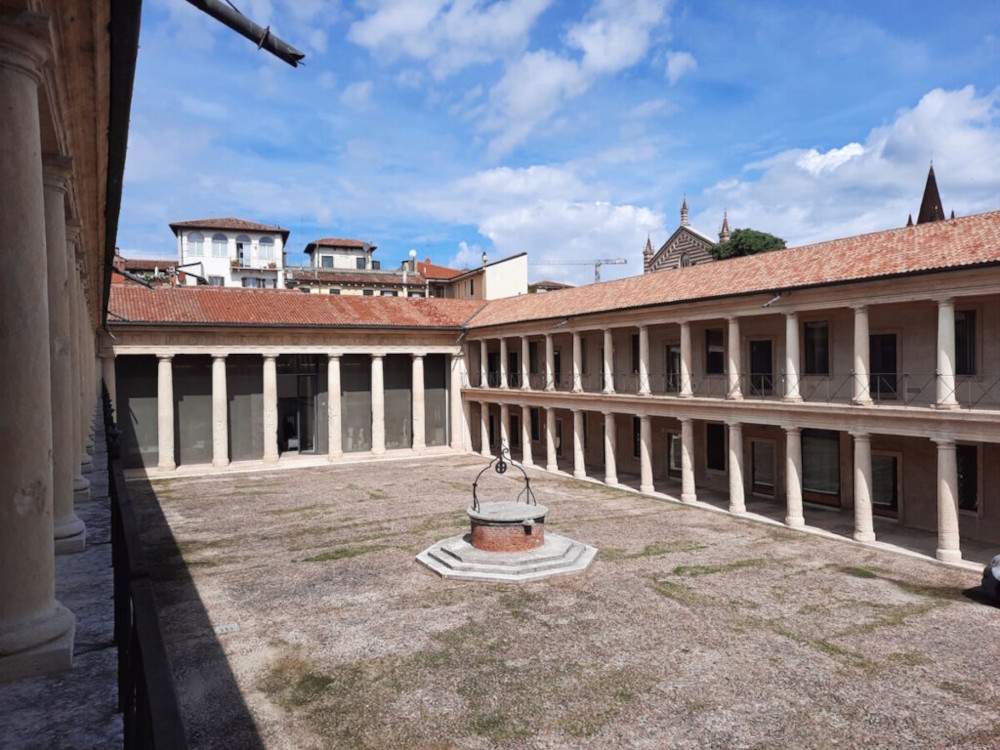The first integrated center for the restoration of cultural heritage in the Veneto region is born in Verona
An integrated center for restoration and diagnostics, study, research, training, and enhancement of cultural heritage is born at the former Customs House in Terra di Verona, thanks to the collaboration between the Superintendency, the Academy of Fine Arts of Verona, and the City Council. Starting next semester and for nineteen years, in fact, the laboratories of the Restoration course with its modern diagnostic center will be located in the spaces of the historic complex in the Filippini district. A new agreement signed between Superintendent Vincenzo Tinè and Academy President Marco Giaracuni thus strengthens the collaboration between the two entities, inaugurated a couple of years ago, for a shared use of the Ex Dogana spaces.
The Academy’s Restoration School with laboratories and diagnostics center will move to the right wing of the Ex Dogana di Terra complex, owned by the State Property Office but entrusted for management to the Verona Superintendency. The new agreement provides for the restoration and redevelopment, at the Academy’s care and expense based on the Superintendence’s project, of the right wing of the Customs House. With the collaboration also of the Civic Museums of Verona, the Dogana di Terra thus becomes the first integrated center for the restoration of cultural heritage in the Veneto Region, with educational and application potential ranging from painting to mosaics, wood, ceramics, and stone.
This new agreement “aims to optimize the use of mutual human and technical resources and different professional skills, enhancing research and experimentation with new technologies,” said Verona Academy of Fine Arts President Marco Giaracuni. “The sharing of spaces and working tools, with the consequent possibility of containing their management and updating costs, has the ambition of turning into a progressive transfer of skills between institutions, with the possibility of converging students’ activities in projects and research of mutual interest.”
The monumental complex of the Land Customs House, built between 1745 and 1748 to a design by architect Alessandro Pompei, is among the most significant examples of neoclassical architecture in Italy: in fact, it preserves intact the 1,200-square-meter four-sided portico, structured with a double loggia on three sides and a colonnade on the side opposite the entrance, connected by monumental arch to the neighboring River Customs House. Owned by the State Property Office, it has been in con segna to the Verona Superintendence since the 1970s.
Photo: Accademia Belle Arti Verona
 |
| The first integrated center for the restoration of cultural heritage in the Veneto region is born in Verona |
Warning: the translation into English of the original Italian article was created using automatic tools. We undertake to review all articles, but we do not guarantee the total absence of inaccuracies in the translation due to the program. You can find the original by clicking on the ITA button. If you find any mistake,please contact us.





























